
Key Dates
1610-1643
The reign of Louis XIII
- Day of the Dupes, 1630
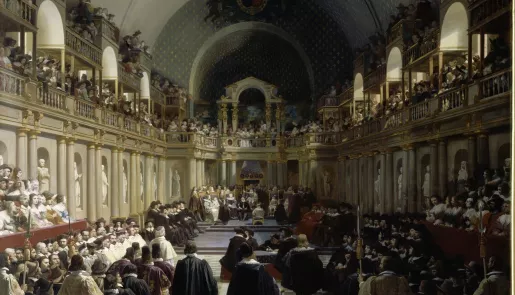
10 and 11 November 1630
Day of the Dupes, 1630
This event was a political and diplomatic turning point in the reign of King Louis XIII and the first major event in the history of France to take place at Versailles. The Day of the Dupes – which in fact took place over two days – brought Marie de’ Medici and Cardinal Richelieu head to head. Contrary to what everyone expected, it was the cardinal who triumphed.
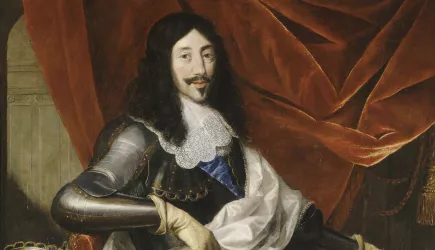
1610-1643
The reign of Louis XIII
- Day of the Dupes, 1630

10 and 11 November 1630
Day of the Dupes, 1630
This event was a political and diplomatic turning point in the reign of King Louis XIII and the first major event in the history of France to take place at Versailles. The Day of the Dupes – which in fact took place over two days – brought Marie de’ Medici and Cardinal Richelieu head to head. Contrary to what everyone expected, it was the cardinal who triumphed.

1643-1715
The reign of Louis XIV
- Versailles, “capital” of the kingdom, 1682
- The party of the Delights of the Enchanted Island
- The Great Royal Entertainment
- Reception of the Doge of Genoa, 1685
- Reception of the Ambassador of Siam, 1686
- Marriage of the Duke of Burgundy to Marie-Adélaïde, 1697
- The Duke of Anjou, King of Spain, 1700
- Reception of the Ambassadors of Persia, 1715
- Louis XIV’s guide to the gardens of Versailles
- A day in the life of Louis XIV
- Death of Louis XIV, 1715

6 May 1682
Versailles, “capital” of the kingdom, 1682
The establishment of the Court and the seat of power in Versailles had been underway since 1677, when the works on the site were sped up and the king doubled up state services between Paris and Versailles. On 6 May 1682, Versailles became the headquarters of the government. Athough Paris never ceased to be the official capital, the decision made Versailles the de facto centre of the kingdom until 1789. Above all, and to the great dismay of Colbert, who wanted the king and his court to stay in Paris, the move confirmed to the king just how much he liked Versailles. The works on Versailles were only just beginning.
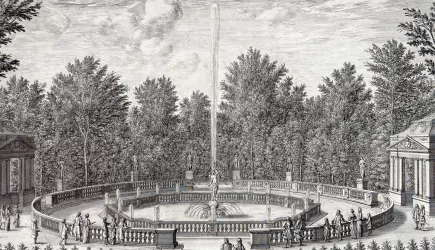
7-13 May 1664
The party of the Delights of the Enchanted Island
This was the first grand party given in Versailles by Louis XIV, and was also the first time, under the aegis of the king, that Molière and Lully collaborated. These six days of spectacular celebrations firmly established the legend of Versailles as a festive venue.
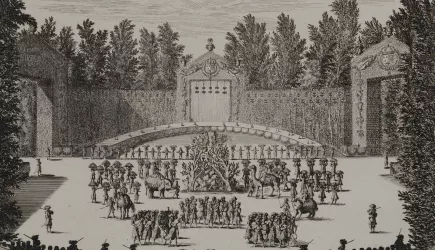
18 July 1668
The Great Royal Entertainment
The second party given by Louis XIV in Versailles, the Great Royal Entertainment, celebrated the king’s glory after the peace treaty of Aix-la-Chapelle. This treaty established the annexation by France of several Flemish territories (including Lille, Douai and Dunkirk).
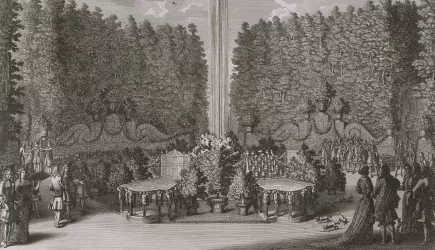
15 May 1685
Reception of the Doge of Genoa, 1685
The lavish reception for the Doge of Genoa, held by Louis XIV in the Hall of Mirrors, was the first of its kind at Versailles. It demonstrated the political dimension the Palace had taken on under the king at the height of his power and glory.
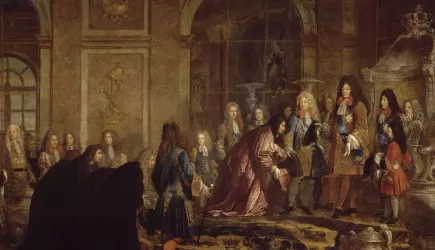
1 September 1686
Reception of the Ambassador of Siam, 1686
Although held in a more peaceful context than the one put on for the Doge of Genoa, the reception of the ambassadors of King Narai of Siam was intended to push France’s influence aggressively in the East. In his battle against the Dutch, Louis XIV was aiming to win over a new ally.
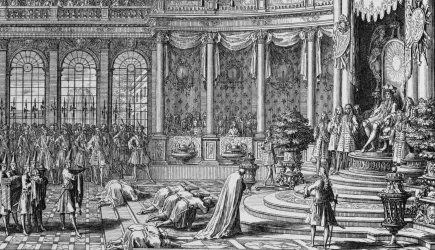
December 1697
Marriage of the Duke of Burgundy to Marie-Adélaïde, 1697
At the end of the War of the League of Augsburg (1689-1697), France and the Duchy of Savoy sealed their reconciliation with a new dynastic union: the marriage of the Duke of Burgundy to Marie-Adélaïde of Savoy. The only one of their children to survive the measles epidemic that killed the duke and duchess too was the future Louis XV.
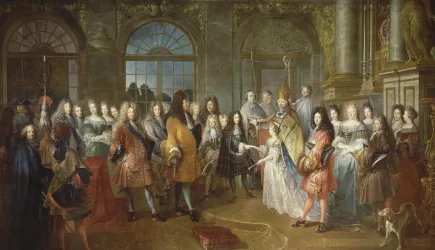
12 November 1700
The Duke of Anjou, King of Spain, 1700
The Duke of Anjou, Louis XIV’s second-eldest grandson, became Philip V of Spain in 1700. To the great displeasure of Austria, the Bourbon dynasty now sat on the Habsburgs' former throne. A new war with France was brewing.
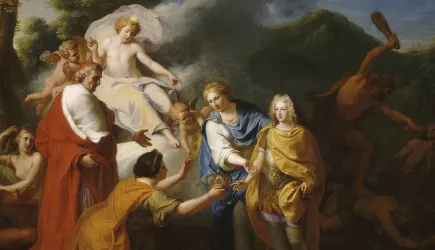
19 February 1715
Reception of the Ambassadors of Persia, 1715
Following the visits of the ambassadors of Genoa and Siam, the embassy of Persia was the third and final one to be received by Louis XIV in the Hall of Mirrors. The king had organised the ultimate demonstration of his splendour, but the embassy turned out to rather a rather puzzling one…
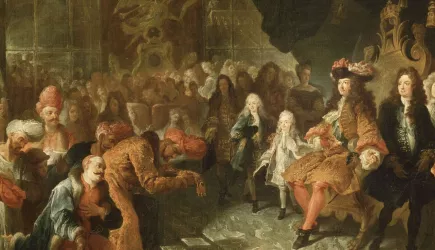
Itinerary
Louis XIV’s guide to the gardens of Versailles
In his work How to show the gardens of Versailles, Louis XIV leads us around the groves and fountains of his Palace. Seven versions were created between 1689 and 1705, including some written in his own hand.
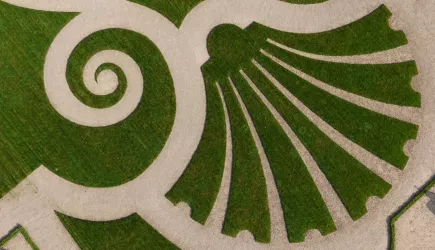
The daily life of the king
A day in the life of Louis XIV
The famous memorialist the Duke of Saint-Simon wrote of Louis XIV: “With an almanach and a watch, one could, from 300 leagues away, say with accuracy what he was doing”. The king’s day was timed to the minute to allow the officers in his service to plan their own work accordingly. From morning to evening his day ran like clockwork, to a schedule that was just as strictly ordered as life in the Court.
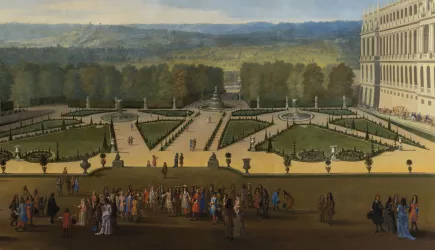
1st September 1715
Death of Louis XIV, 1715
After a week of agonising pain, four days before his 77th birthday, Louis XIV died in Versailles just after 8.15 am on 1 September. He had been king for 72 years, the longest reign in the history of France. A new reign, which would be almost as long (1715-1774), was about to begin: that of Louis XV.
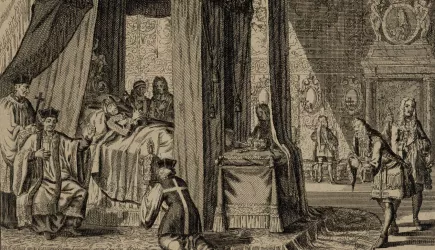
1643-1715
The reign of Louis XIV
- Versailles, “capital” of the kingdom, 1682
- The party of the Delights of the Enchanted Island
- The Great Royal Entertainment
- Reception of the Doge of Genoa, 1685
- Reception of the Ambassador of Siam, 1686
- Marriage of the Duke of Burgundy to Marie-Adélaïde, 1697
- The Duke of Anjou, King of Spain, 1700
- Reception of the Ambassadors of Persia, 1715
- Louis XIV’s guide to the gardens of Versailles
- A day in the life of Louis XIV
- Death of Louis XIV, 1715

6 May 1682
Versailles, “capital” of the kingdom, 1682
The establishment of the Court and the seat of power in Versailles had been underway since 1677, when the works on the site were sped up and the king doubled up state services between Paris and Versailles. On 6 May 1682, Versailles became the headquarters of the government. Athough Paris never ceased to be the official capital, the decision made Versailles the de facto centre of the kingdom until 1789. Above all, and to the great dismay of Colbert, who wanted the king and his court to stay in Paris, the move confirmed to the king just how much he liked Versailles. The works on Versailles were only just beginning.

7-13 May 1664
The party of the Delights of the Enchanted Island
This was the first grand party given in Versailles by Louis XIV, and was also the first time, under the aegis of the king, that Molière and Lully collaborated. These six days of spectacular celebrations firmly established the legend of Versailles as a festive venue.

18 July 1668
The Great Royal Entertainment
The second party given by Louis XIV in Versailles, the Great Royal Entertainment, celebrated the king’s glory after the peace treaty of Aix-la-Chapelle. This treaty established the annexation by France of several Flemish territories (including Lille, Douai and Dunkirk).

15 May 1685
Reception of the Doge of Genoa, 1685
The lavish reception for the Doge of Genoa, held by Louis XIV in the Hall of Mirrors, was the first of its kind at Versailles. It demonstrated the political dimension the Palace had taken on under the king at the height of his power and glory.

1 September 1686
Reception of the Ambassador of Siam, 1686
Although held in a more peaceful context than the one put on for the Doge of Genoa, the reception of the ambassadors of King Narai of Siam was intended to push France’s influence aggressively in the East. In his battle against the Dutch, Louis XIV was aiming to win over a new ally.

December 1697
Marriage of the Duke of Burgundy to Marie-Adélaïde, 1697
At the end of the War of the League of Augsburg (1689-1697), France and the Duchy of Savoy sealed their reconciliation with a new dynastic union: the marriage of the Duke of Burgundy to Marie-Adélaïde of Savoy. The only one of their children to survive the measles epidemic that killed the duke and duchess too was the future Louis XV.

12 November 1700
The Duke of Anjou, King of Spain, 1700
The Duke of Anjou, Louis XIV’s second-eldest grandson, became Philip V of Spain in 1700. To the great displeasure of Austria, the Bourbon dynasty now sat on the Habsburgs' former throne. A new war with France was brewing.

19 February 1715
Reception of the Ambassadors of Persia, 1715
Following the visits of the ambassadors of Genoa and Siam, the embassy of Persia was the third and final one to be received by Louis XIV in the Hall of Mirrors. The king had organised the ultimate demonstration of his splendour, but the embassy turned out to rather a rather puzzling one…

Itinerary
Louis XIV’s guide to the gardens of Versailles
In his work How to show the gardens of Versailles, Louis XIV leads us around the groves and fountains of his Palace. Seven versions were created between 1689 and 1705, including some written in his own hand.

The daily life of the king
A day in the life of Louis XIV
The famous memorialist the Duke of Saint-Simon wrote of Louis XIV: “With an almanach and a watch, one could, from 300 leagues away, say with accuracy what he was doing”. The king’s day was timed to the minute to allow the officers in his service to plan their own work accordingly. From morning to evening his day ran like clockwork, to a schedule that was just as strictly ordered as life in the Court.

1st September 1715
Death of Louis XIV, 1715
After a week of agonising pain, four days before his 77th birthday, Louis XIV died in Versailles just after 8.15 am on 1 September. He had been king for 72 years, the longest reign in the history of France. A new reign, which would be almost as long (1715-1774), was about to begin: that of Louis XV.

1715-1774
The reign of Louis XV
- Visit from Peter the Great, 1717
- The Court returns to Versailles, 1722
- Visit from the ambassadors of the Sublime Porte, 1742
- The Yew Ball
- Assassination attempt on King Louis XV by Damiens, 1757
- Visit from the child Mozart, 1763-1764
- Marriage of the Dauphin Louis and Marie-Antoinette
- Death of Louis XV, 1774
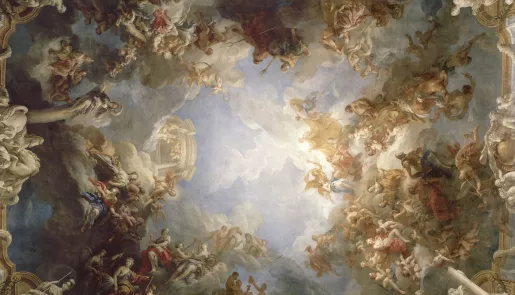
24-27 May – 3-12 June 1717
Visit from Peter the Great, 1717
Peter the Great (1672-1725) was heir of the Romanov dynasty and had already been governing Russia for 28 years when he visited France in 1717. A great reformer, in the first few years of his reign he had travelled across Europe looking for inspiration for his grand projects, but France had refused to receive him, for diplomatic reasons. This time, it was Versailles that inspired him.
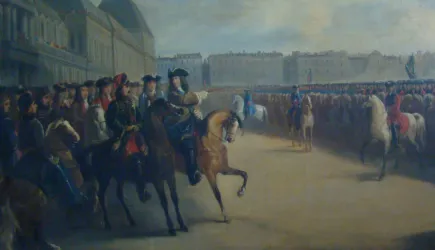
15 June 1722
The Court returns to Versailles, 1722
After seven years away from Versailles, the Court returned in 1722. Louis XV, aged 12 at the time, was thrilled to go back to the palace of his great-grandfather Louis XIV, where he had been born. The Palace remained his official residence until his death in 1774.
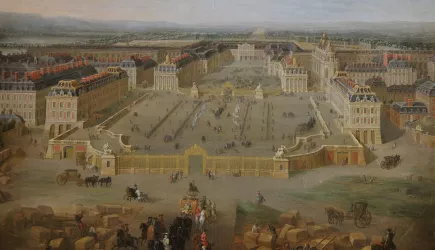
11 January 1742
Visit from the ambassadors of the Sublime Porte, 1742
The Sublime Porte was the first embassy to be received in the Hall of Mirrors since 1715, but it was nevertheless welcomed in accordance with long-established ritual. The occasion was an important one: an alliance between France and the Ottoman Empire was at stake. The War of the Austrian Succession, fought with Austria, France’s sworn enemy, had started.
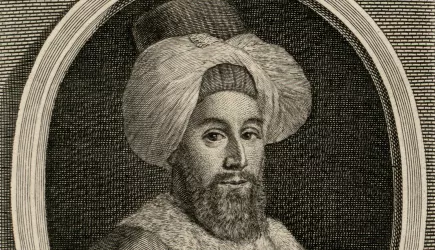
25-26 February 1745
The Yew Ball
This famous masked ball was put on for the marriage of the Dauphin, son of Louis XV, to the Infanta of Spain, Maria Teresa Rafaela, daughter of Philippe V, and marked the start of Louis XV’s love affair with the future Marquise de Pompadour. The lovers remained together thereafter.
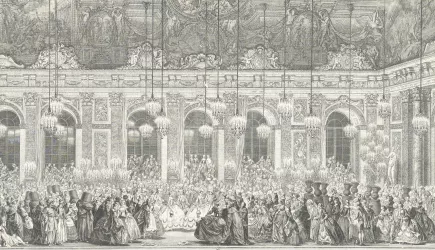
5 January 1757
Assassination attempt on King Louis XV by Damiens, 1757
There had been no attempts to harm the sacred body of the king since the attack by Ravaillac in 1610. But in 1757, as Louis XV was leaving the Palace, a man rushed towards him and stabbed him in the side. His name was Robert-François Damiens.
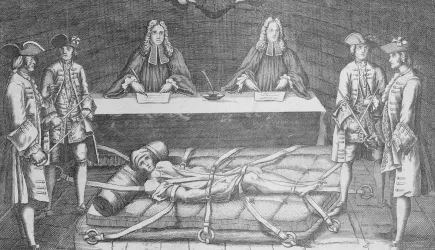
24 December 1763 – 8 January 1764
Visit from the child Mozart, 1763-1764
The young Mozart came to Versailles during a tour of Europe with his father, Leopold, and his sister, Nannerl. His impression of the visit was mixed.
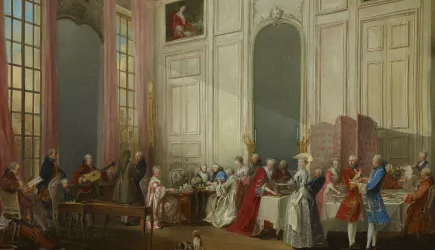
16-17 May 1770
Marriage of the Dauphin Louis and Marie-Antoinette
In 1756, after three centuries of animosity, France and Austria became allies. To consolidate this diplomatic reconciliation, Louis XV and Empress Maria Theresa decided to marry their respective children. The project came to fruition approximately 12 years later with the marriage of the Duke of Berry, Dauphin of France, aged 15, to Marie-Antoinette, Archduchess of Austria, aged 14. The celebrations got underway on 16 and 17 May in Versailles.

10 May 1774
Death of Louis XV, 1774
Louis XV died, aged 64, on 10 May 1774, in the bedchamber of his Private Apartment. His passing brought to an end a reign of 59 years, the longest in the history of France after that of Louis XIV. Against all expectations, Louis “the Beloved” died an unpopular king.
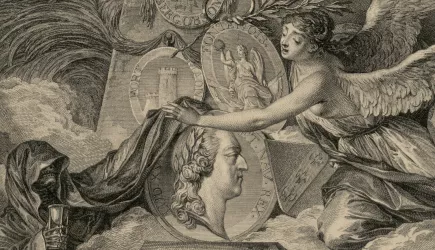
1715-1774
The reign of Louis XV
- Visit from Peter the Great, 1717
- The Court returns to Versailles, 1722
- Visit from the ambassadors of the Sublime Porte, 1742
- The Yew Ball
- Assassination attempt on King Louis XV by Damiens, 1757
- Visit from the child Mozart, 1763-1764
- Marriage of the Dauphin Louis and Marie-Antoinette
- Death of Louis XV, 1774

24-27 May – 3-12 June 1717
Visit from Peter the Great, 1717
Peter the Great (1672-1725) was heir of the Romanov dynasty and had already been governing Russia for 28 years when he visited France in 1717. A great reformer, in the first few years of his reign he had travelled across Europe looking for inspiration for his grand projects, but France had refused to receive him, for diplomatic reasons. This time, it was Versailles that inspired him.

15 June 1722
The Court returns to Versailles, 1722
After seven years away from Versailles, the Court returned in 1722. Louis XV, aged 12 at the time, was thrilled to go back to the palace of his great-grandfather Louis XIV, where he had been born. The Palace remained his official residence until his death in 1774.

11 January 1742
Visit from the ambassadors of the Sublime Porte, 1742
The Sublime Porte was the first embassy to be received in the Hall of Mirrors since 1715, but it was nevertheless welcomed in accordance with long-established ritual. The occasion was an important one: an alliance between France and the Ottoman Empire was at stake. The War of the Austrian Succession, fought with Austria, France’s sworn enemy, had started.

25-26 February 1745
The Yew Ball
This famous masked ball was put on for the marriage of the Dauphin, son of Louis XV, to the Infanta of Spain, Maria Teresa Rafaela, daughter of Philippe V, and marked the start of Louis XV’s love affair with the future Marquise de Pompadour. The lovers remained together thereafter.

5 January 1757
Assassination attempt on King Louis XV by Damiens, 1757
There had been no attempts to harm the sacred body of the king since the attack by Ravaillac in 1610. But in 1757, as Louis XV was leaving the Palace, a man rushed towards him and stabbed him in the side. His name was Robert-François Damiens.

24 December 1763 – 8 January 1764
Visit from the child Mozart, 1763-1764
The young Mozart came to Versailles during a tour of Europe with his father, Leopold, and his sister, Nannerl. His impression of the visit was mixed.

16-17 May 1770
Marriage of the Dauphin Louis and Marie-Antoinette
In 1756, after three centuries of animosity, France and Austria became allies. To consolidate this diplomatic reconciliation, Louis XV and Empress Maria Theresa decided to marry their respective children. The project came to fruition approximately 12 years later with the marriage of the Duke of Berry, Dauphin of France, aged 15, to Marie-Antoinette, Archduchess of Austria, aged 14. The celebrations got underway on 16 and 17 May in Versailles.

10 May 1774
Death of Louis XV, 1774
Louis XV died, aged 64, on 10 May 1774, in the bedchamber of his Private Apartment. His passing brought to an end a reign of 59 years, the longest in the history of France after that of Louis XIV. Against all expectations, Louis “the Beloved” died an unpopular king.

1774-1793
The reign of Louis XVI
- First visit by Holy Roman Emperor Joseph II, 1777
- Versailles and the United States of America, 1778-1783
- The first hot air balloon flight
- The affair of the diamond necklace, 1784-1785
- Versailles at the heart of the French Revolution
- Summoning of the Estates General, 1789
- Jeu de Paume Oath, 1789
- Departure of the King, 1789
- Versailles after the French Revolution

19 April – 30 May 1777
First visit by Holy Roman Emperor Joseph II, 1777
Having learned of his sister Marie-Antoinette’s profligate spending and careworn marriage, Holy Roman Emperor Joseph II decided to strike out for Versailles. Besides his brotherly concerns, he also came as a knowledgeable sovereign curious to discover the kingdom of France.
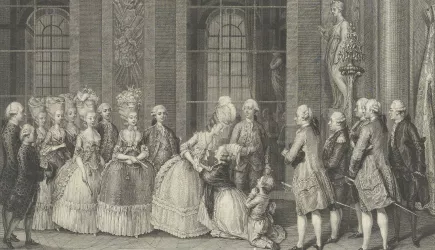
Versailles and the United States of America, 1778-1783
The Palace of Versailles has always had close ties with the history of the United States of America. It was at Versailles that the decision was made to recognise the United States of America as a nation in 1777. It was at Versailles that Benjamin Franklin was received in 1778 by Louis XVI who granted him the military assistance that led to the signature of the Treaty of Independence of the United States of America in 1783.
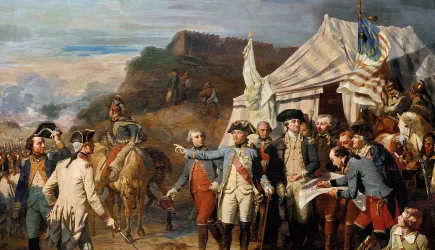
19 September 1783
The first hot air balloon flight
The first 'aerostatic' flight in history was an experiment carried out by the Montgolfier brothers at Versailles in 1783. At long last, man could leave the surface of the earth below.
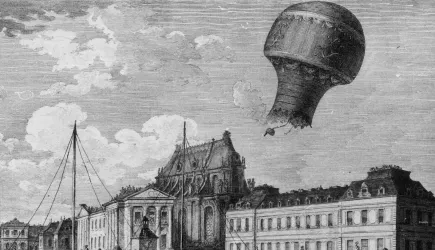
1784-1785
The affair of the diamond necklace, 1784-1785
Cardinal Rohan intended to give Marie-Antoinette a luxurious diamond necklace to regain her favour. But an imposter posing as the queen proved cleverer than the Cardinal, causing a glittering scandal.
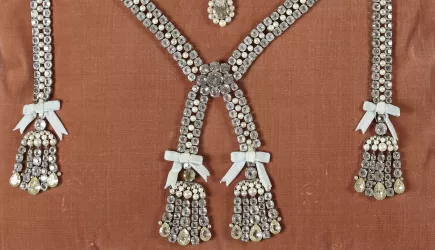
1789
Versailles at the heart of the French Revolution
The French Revolution did not just happen in one day. The whole period, which really began in 1789, was one of profound political, social and economic upheaval in France. The Palace of Versailles found itself right in the middle of all this change and, today, the museum’s collections bear traces of this key episode in France’s history.

4-5 May 1789
Summoning of the Estates General, 1789
The political and financial situation in France had grown rather bleak, forcing Louis XVI to summon the Estates General. This assembly was composed of three estates – the clergy, nobility and commoners – who had the power to decide on the levying of new taxes and to undertake reforms in the country. The opening of the Estates General, on 5 May 1789 in Versailles, also marked the start of the French Revolution.
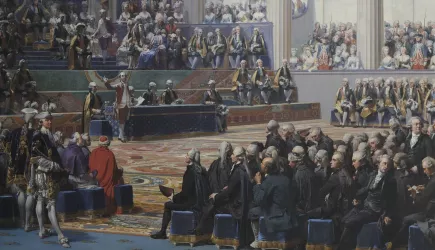
20 June 1789
Jeu de Paume Oath, 1789
The founding act of French democracy took place at the very beginning of the Revolution, just a stone’s throw from the monarchic seat of power. On 20 June 1789, in the Real Tennis Room, not far from the Palace of Versailles, the deputies swore never to separate until they had given France a Constitution.
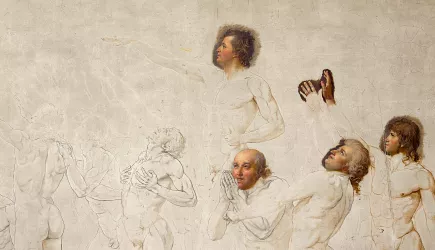
6 October 1789
Departure of the King, 1789
Having started in Versailles in May 1789, the French Revolution saw its first concrete act here in October of the same year with the departure of the king. After a century of royal residency the Versailles legend came to an end, and Paris once again became the centre of the kingdom. A new page in the history of France was being written.
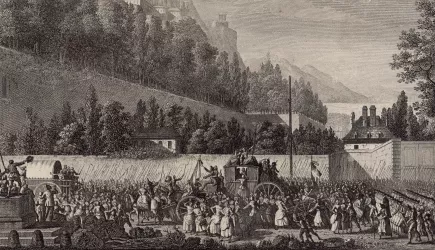
1793-1799
Versailles after the French Revolution
The French Revolution was a turning point in the history of both France and the Palace of Versailles.
The main royal residence since 1682 and the reign of Louis XIV, the Palace was abandoned by the royal family in 1789.
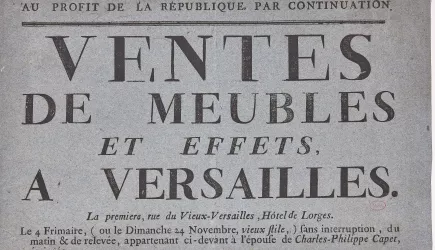
1774-1793
The reign of Louis XVI
- First visit by Holy Roman Emperor Joseph II, 1777
- Versailles and the United States of America, 1778-1783
- The first hot air balloon flight
- The affair of the diamond necklace, 1784-1785
- Versailles at the heart of the French Revolution
- Summoning of the Estates General, 1789
- Jeu de Paume Oath, 1789
- Departure of the King, 1789
- Versailles after the French Revolution

19 April – 30 May 1777
First visit by Holy Roman Emperor Joseph II, 1777
Having learned of his sister Marie-Antoinette’s profligate spending and careworn marriage, Holy Roman Emperor Joseph II decided to strike out for Versailles. Besides his brotherly concerns, he also came as a knowledgeable sovereign curious to discover the kingdom of France.

Versailles and the United States of America, 1778-1783
The Palace of Versailles has always had close ties with the history of the United States of America. It was at Versailles that the decision was made to recognise the United States of America as a nation in 1777. It was at Versailles that Benjamin Franklin was received in 1778 by Louis XVI who granted him the military assistance that led to the signature of the Treaty of Independence of the United States of America in 1783.

19 September 1783
The first hot air balloon flight
The first 'aerostatic' flight in history was an experiment carried out by the Montgolfier brothers at Versailles in 1783. At long last, man could leave the surface of the earth below.

1784-1785
The affair of the diamond necklace, 1784-1785
Cardinal Rohan intended to give Marie-Antoinette a luxurious diamond necklace to regain her favour. But an imposter posing as the queen proved cleverer than the Cardinal, causing a glittering scandal.

1789
Versailles at the heart of the French Revolution
The French Revolution did not just happen in one day. The whole period, which really began in 1789, was one of profound political, social and economic upheaval in France. The Palace of Versailles found itself right in the middle of all this change and, today, the museum’s collections bear traces of this key episode in France’s history.

4-5 May 1789
Summoning of the Estates General, 1789
The political and financial situation in France had grown rather bleak, forcing Louis XVI to summon the Estates General. This assembly was composed of three estates – the clergy, nobility and commoners – who had the power to decide on the levying of new taxes and to undertake reforms in the country. The opening of the Estates General, on 5 May 1789 in Versailles, also marked the start of the French Revolution.

20 June 1789
Jeu de Paume Oath, 1789
The founding act of French democracy took place at the very beginning of the Revolution, just a stone’s throw from the monarchic seat of power. On 20 June 1789, in the Real Tennis Room, not far from the Palace of Versailles, the deputies swore never to separate until they had given France a Constitution.

6 October 1789
Departure of the King, 1789
Having started in Versailles in May 1789, the French Revolution saw its first concrete act here in October of the same year with the departure of the king. After a century of royal residency the Versailles legend came to an end, and Paris once again became the centre of the kingdom. A new page in the history of France was being written.

1793-1799
Versailles after the French Revolution
The French Revolution was a turning point in the history of both France and the Palace of Versailles.
The main royal residence since 1682 and the reign of Louis XIV, the Palace was abandoned by the royal family in 1789.

1797-1875
The 19th century
- Napoleon at Versailles
- Creation of the Special Museum of the French School, 1797
- Visit of Pope Pius VII, 1805
- Inauguration of the historic galleries, 1837
- Visit of Queen Victoria, 1855
- Proclamation of the German Empire, 1871
- Parliamentarians at Versailles
- Birth of the Third Republic, 1875

In the emperor's footsteps
Napoleon at Versailles
In 1804, Napoleon Bonaparte declared himself Emperor of the French, under the title Napoleon I. As the architect of France’s recovery following the Revolution, from the moment he took power, he dreamed of turning Versailles back into the privileged place of power it once was.
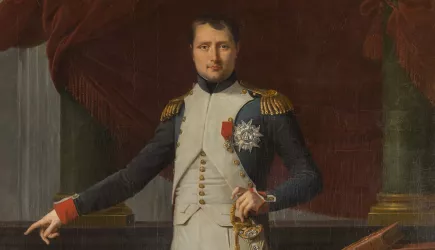
28 January 1797
Creation of the Special Museum of the French School, 1797
Having become a central storage depot for the arts for the Department of Seine-et-Oise in 1792, the Palace later saw the creation of a Central Museum for the arts. It was later replaced by the Special Museum of the French School, to complement the Louvre, which was to focus on foreign schools of art.
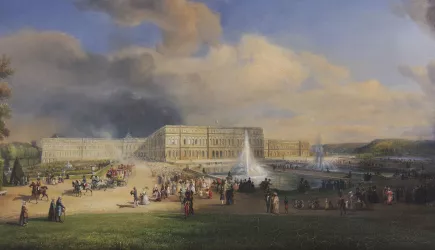
3 January 1805
Visit of Pope Pius VII, 1805
Pope Pius VII came to coronate Napoleon in Notre-Dame on 2 December 1804, and he remained in Paris until April 1805. Early in the new year he set out to visit the former residence of the kings of France. A large crowd gathered to wait for him in Versailles.
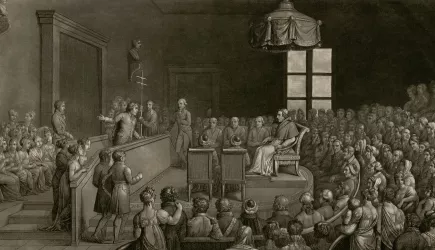
10 June 1837
Inauguration of the historic galleries, 1837
In 1837 Louis-Philippe, King of the French, was finally able to inaugurate the historic galleries he had wanted to install in Versailles. The day was a key event in the history of the Palace.
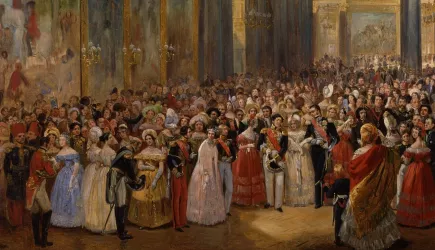
20 and 25 August 1855
Visit of Queen Victoria, 1855
One of Napoleon III’s greatest aims was to reconcile his country with England. During the British Queen’s visit to France he made sure she was met with an ostentatiousness not witnessed in Versailles since the Monarchy.
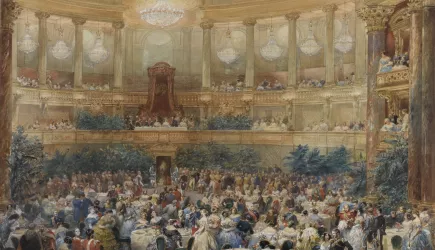
18 January 1871
Proclamation of the German Empire, 1871
At the end of the War of 1870, France lay defeated and invaded by its enemies. Chancellor Bismarck proclaimed the German Empire in the Hall of Mirrors. Following the humiliations meted out by Louis XIV and Napoleon I, Germany finally had its revenge.

1871-1879
Parliamentarians at Versailles
The history of the French Parliamentary Republic is closely tied to the history of the Palace of Versailles, since all the debates of the parliamentary assemblies at the beginning of the Third Republic were held here, on this famous site dating from the Ancien Régime.
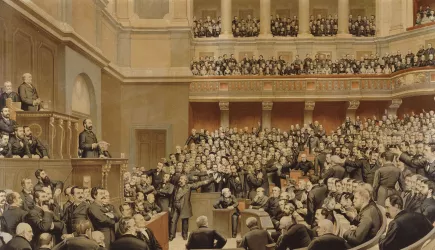
30 January 1875
Birth of the Third Republic, 1875
After four years of uncertainty over the leadership of the country, the Third Republic was firmly instituted in Versailles in 1875. The proclamation quenched the monarchist quarrels.
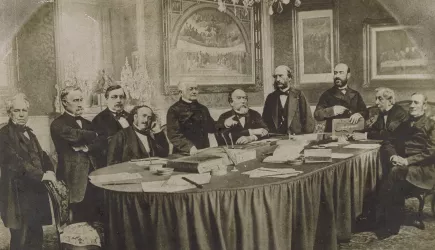
1797-1875
The 19th century
- Napoleon at Versailles
- Creation of the Special Museum of the French School, 1797
- Visit of Pope Pius VII, 1805
- Inauguration of the historic galleries, 1837
- Visit of Queen Victoria, 1855
- Proclamation of the German Empire, 1871
- Parliamentarians at Versailles
- Birth of the Third Republic, 1875

In the emperor's footsteps
Napoleon at Versailles
In 1804, Napoleon Bonaparte declared himself Emperor of the French, under the title Napoleon I. As the architect of France’s recovery following the Revolution, from the moment he took power, he dreamed of turning Versailles back into the privileged place of power it once was.

28 January 1797
Creation of the Special Museum of the French School, 1797
Having become a central storage depot for the arts for the Department of Seine-et-Oise in 1792, the Palace later saw the creation of a Central Museum for the arts. It was later replaced by the Special Museum of the French School, to complement the Louvre, which was to focus on foreign schools of art.

3 January 1805
Visit of Pope Pius VII, 1805
Pope Pius VII came to coronate Napoleon in Notre-Dame on 2 December 1804, and he remained in Paris until April 1805. Early in the new year he set out to visit the former residence of the kings of France. A large crowd gathered to wait for him in Versailles.

10 June 1837
Inauguration of the historic galleries, 1837
In 1837 Louis-Philippe, King of the French, was finally able to inaugurate the historic galleries he had wanted to install in Versailles. The day was a key event in the history of the Palace.

20 and 25 August 1855
Visit of Queen Victoria, 1855
One of Napoleon III’s greatest aims was to reconcile his country with England. During the British Queen’s visit to France he made sure she was met with an ostentatiousness not witnessed in Versailles since the Monarchy.

18 January 1871
Proclamation of the German Empire, 1871
At the end of the War of 1870, France lay defeated and invaded by its enemies. Chancellor Bismarck proclaimed the German Empire in the Hall of Mirrors. Following the humiliations meted out by Louis XIV and Napoleon I, Germany finally had its revenge.

1871-1879
Parliamentarians at Versailles
The history of the French Parliamentary Republic is closely tied to the history of the Palace of Versailles, since all the debates of the parliamentary assemblies at the beginning of the Third Republic were held here, on this famous site dating from the Ancien Régime.

30 January 1875
Birth of the Third Republic, 1875
After four years of uncertainty over the leadership of the country, the Third Republic was firmly instituted in Versailles in 1875. The proclamation quenched the monarchist quarrels.

The 20th century
- The ghosts of Trianon
- Versailles and Cinema
- The Palace of Versailles during the Great War
- The Treaty of Versailles, 1919
- State visits, 20th century
- The Kennedys at Versailles
- The Palace of Versailles<br>during the Second World war
- André Malraux and the restoration of Trianon
- The Versailles summit, 1982
- The storm at Versailles, 1999
- The Congress of Versailles and the Fifth Republic

The ghosts of Trianon
On August 10, 1901, two English women had an experience which they considered to be paranormal in the gardens of the Petit Trianon. This story, which they published in 1911 under the title "An adventure", met with some success and fueled the theory that ghosts haunt the Trianon.
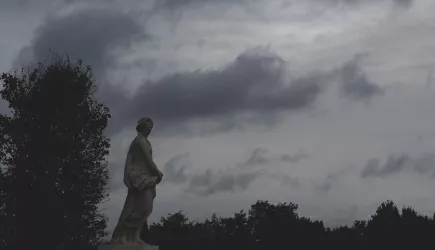
Versailles and Cinema
From Abel Gance to Sofia Coppola, from Sacha Guitry to Pierre Schoeller... Since 1896 and the first mention of a film shot in the gardens of Versailles, the Estate of Versailles has never ceased to open its doors to French and international cinema.
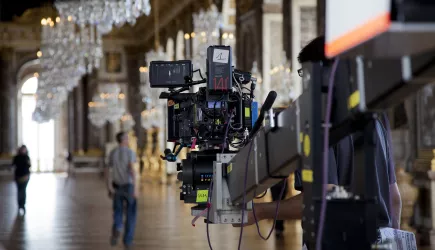
1914-1918
The Palace of Versailles during the Great War
Thanks to an unprecedented combination of photographic material and original records safeguarded in the museum archives and at the French National Library, you can discover how the Palace of Versailles lived through the 14-18 War. In partnership with the French National Library, Gallica.
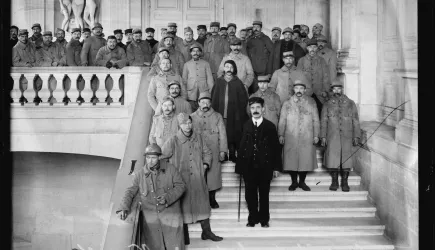
28 June 1919
The Treaty of Versailles, 1919
After four years of devastating fighting, the First World War came to an end in 1919 in Versailles. The treaty, which represented “peace” for some and a “diktat” for others, also sowed the seeds of the Second World War, which would break out twenty years later.
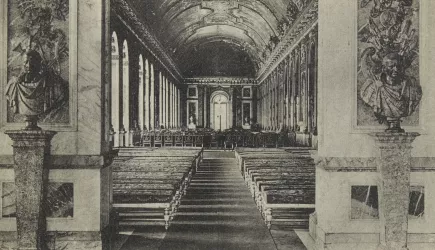
The French Republic in Versailles
State visits, 20th century
Since the late 19th century the Palace of Versailles has become an important venue for official and diplomatic receptions in France.
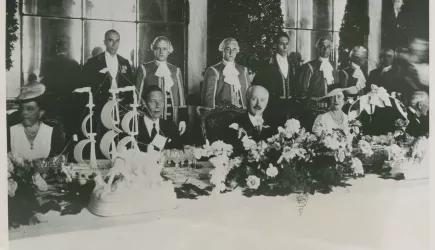
1 june 1961
The Kennedys at Versailles
On 1 June 1961, the Palace of Versailles received two prestigious guests: John Fitzgerald Kennedy, 35th President of the USA, and his wife, Jacqueline "Jackie" Kennedy.
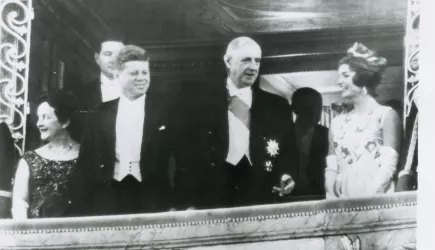
1939-1945
The Palace of Versailles<br>during the Second World war
There are certain chapters in the palace’s history which receive less attention than others, despite being remarkably well-documented. The Second World War is one of the most intriguing examples.
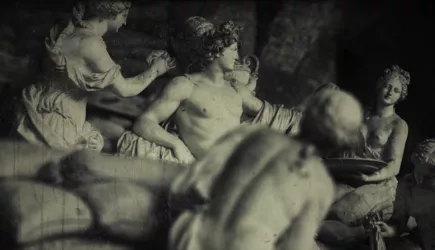
1962-1966
André Malraux and the restoration of Trianon
As General Gaulle once confided to André Malraux: “Versailles, it took some doing; let’s not compromise on the grandeur”. With this in mind, the Minister of Cultural Affairs took on the project of restoring the Grand Trianon between 1962 and 1966.
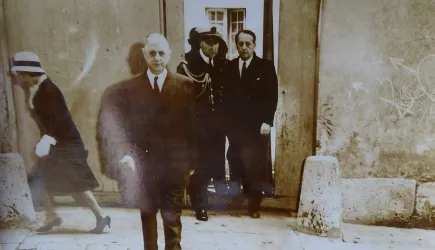
4-7 June 1982
The Versailles summit, 1982
In 1982 President Mitterrand, playing host to the representatives of the seven wealthiest industrialised countries, ensured the French Fifth Republic’s customary levels of splendour for the first international summit of his mandate. The summit culminated in a grand finale.
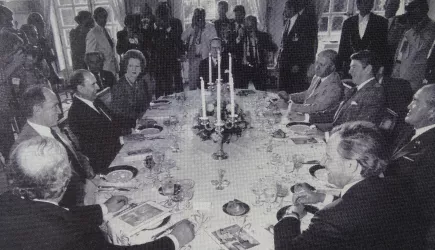
26 December 1999
The storm at Versailles, 1999
In December 1999 France was hit, most unusually, by a hurricane, and the estate of Versailles suffered serious damage.
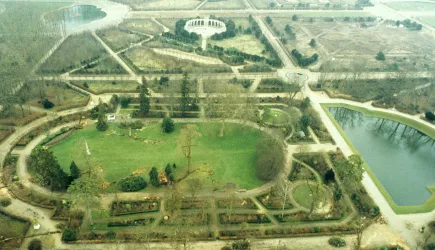
The 20th century
- The ghosts of Trianon
- Versailles and Cinema
- The Palace of Versailles during the Great War
- The Treaty of Versailles, 1919
- State visits, 20th century
- The Kennedys at Versailles
- The Palace of Versailles<br>during the Second World war
- André Malraux and the restoration of Trianon
- The Versailles summit, 1982
- The storm at Versailles, 1999
- The Congress of Versailles and the Fifth Republic

The ghosts of Trianon
On August 10, 1901, two English women had an experience which they considered to be paranormal in the gardens of the Petit Trianon. This story, which they published in 1911 under the title "An adventure", met with some success and fueled the theory that ghosts haunt the Trianon.

Versailles and Cinema
From Abel Gance to Sofia Coppola, from Sacha Guitry to Pierre Schoeller... Since 1896 and the first mention of a film shot in the gardens of Versailles, the Estate of Versailles has never ceased to open its doors to French and international cinema.

1914-1918
The Palace of Versailles during the Great War
Thanks to an unprecedented combination of photographic material and original records safeguarded in the museum archives and at the French National Library, you can discover how the Palace of Versailles lived through the 14-18 War. In partnership with the French National Library, Gallica.

28 June 1919
The Treaty of Versailles, 1919
After four years of devastating fighting, the First World War came to an end in 1919 in Versailles. The treaty, which represented “peace” for some and a “diktat” for others, also sowed the seeds of the Second World War, which would break out twenty years later.

The French Republic in Versailles
State visits, 20th century
Since the late 19th century the Palace of Versailles has become an important venue for official and diplomatic receptions in France.

1 june 1961
The Kennedys at Versailles
On 1 June 1961, the Palace of Versailles received two prestigious guests: John Fitzgerald Kennedy, 35th President of the USA, and his wife, Jacqueline "Jackie" Kennedy.

1939-1945
The Palace of Versailles<br>during the Second World war
There are certain chapters in the palace’s history which receive less attention than others, despite being remarkably well-documented. The Second World War is one of the most intriguing examples.

1962-1966
André Malraux and the restoration of Trianon
As General Gaulle once confided to André Malraux: “Versailles, it took some doing; let’s not compromise on the grandeur”. With this in mind, the Minister of Cultural Affairs took on the project of restoring the Grand Trianon between 1962 and 1966.

4-7 June 1982
The Versailles summit, 1982
In 1982 President Mitterrand, playing host to the representatives of the seven wealthiest industrialised countries, ensured the French Fifth Republic’s customary levels of splendour for the first international summit of his mandate. The summit culminated in a grand finale.

26 December 1999
The storm at Versailles, 1999
In December 1999 France was hit, most unusually, by a hurricane, and the estate of Versailles suffered serious damage.





